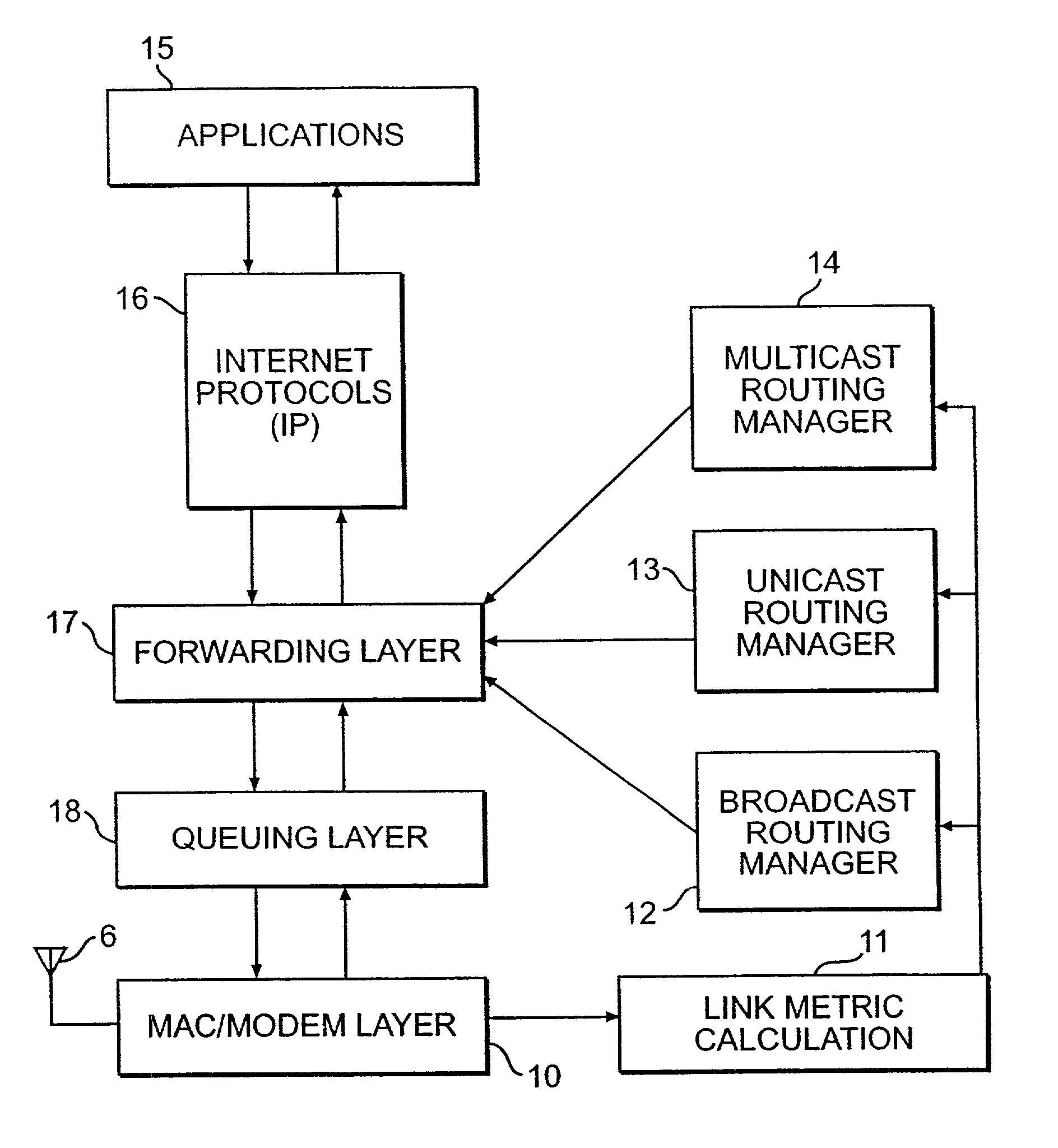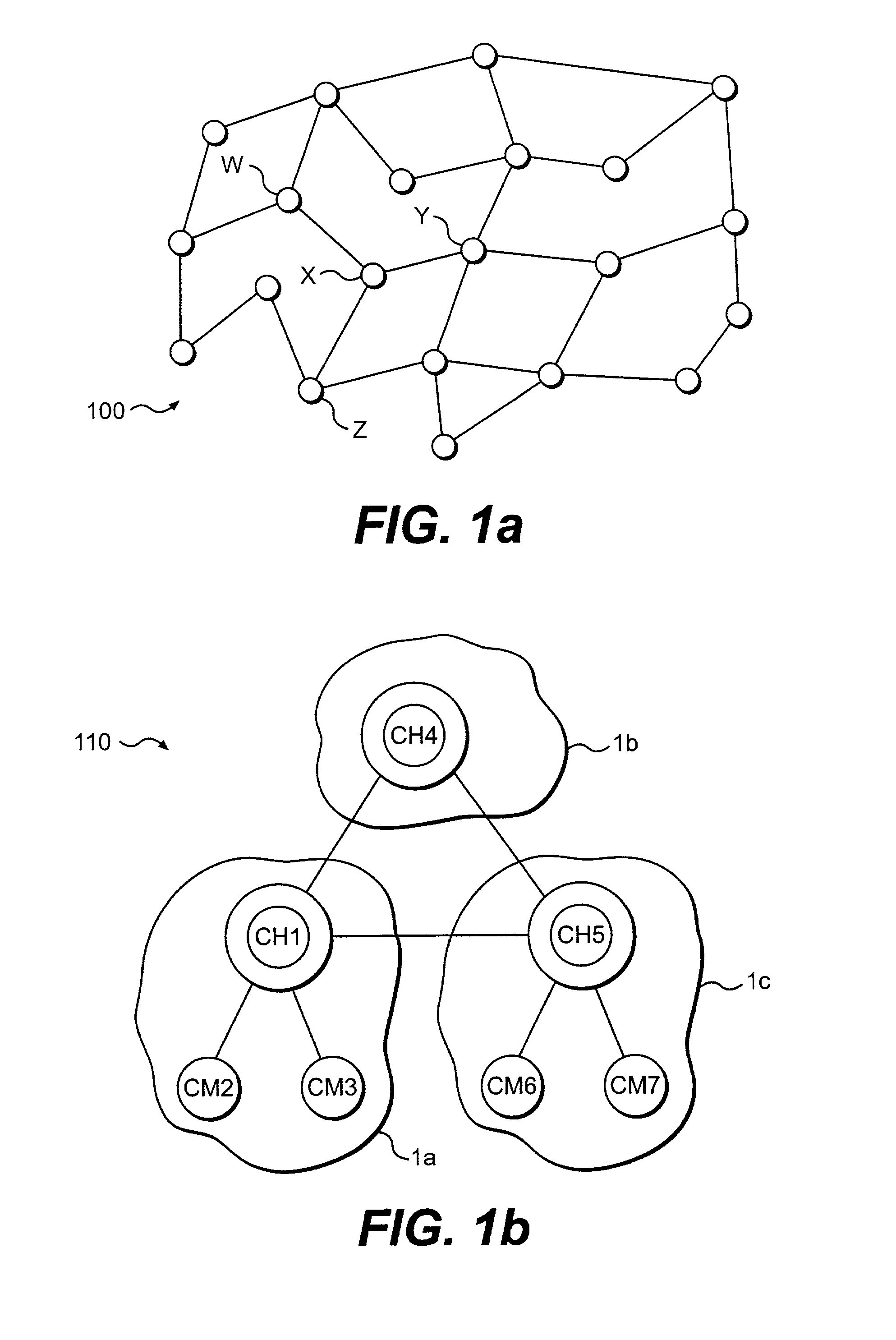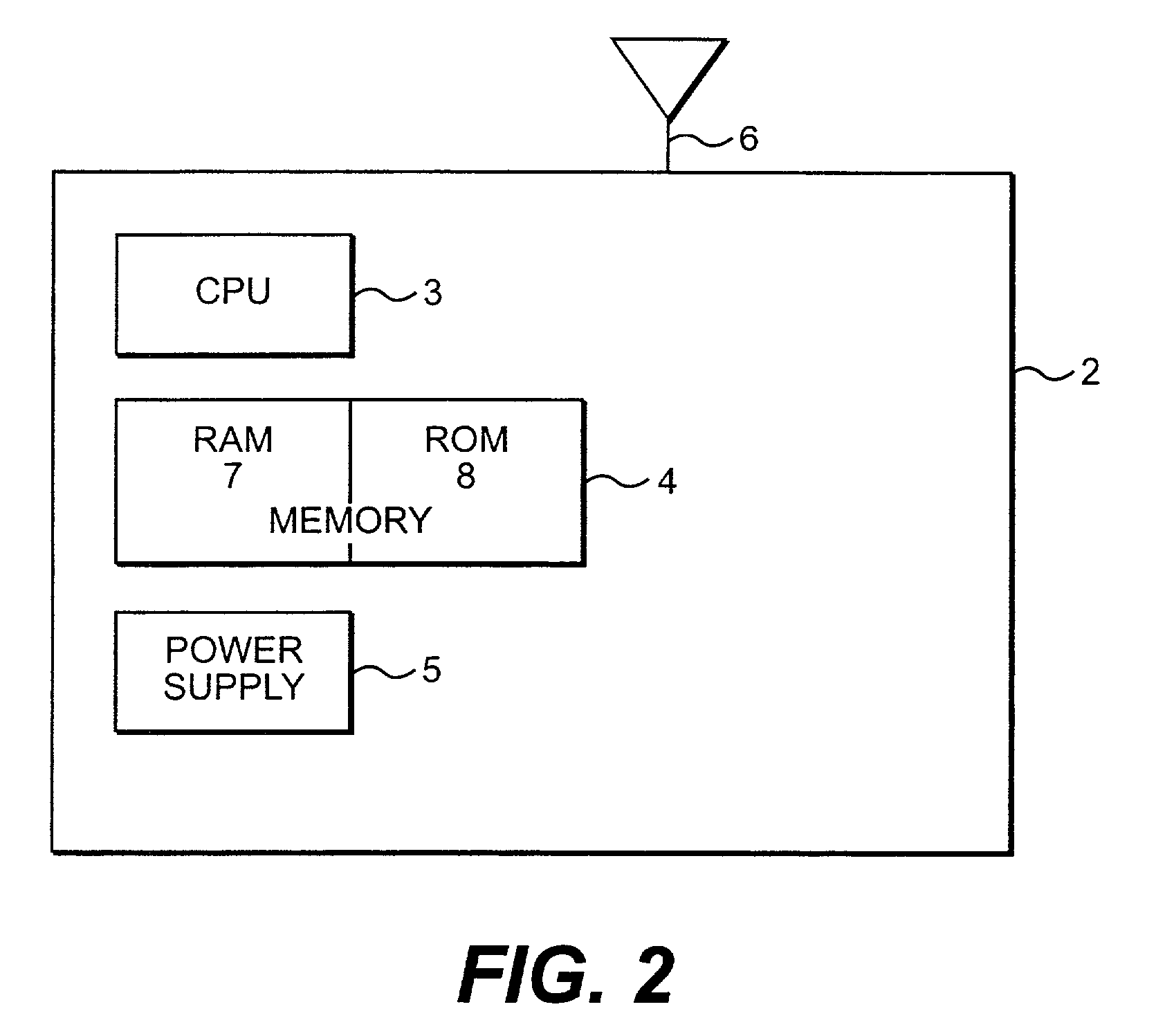[0091]Another
advantage of the present invention is that the table design, particularly the
unicast and
multicast TOS tables, allows a plurality of routing managers of a given class (e.g.,
unicast or
multicast) to operate simultaneously without interfering with each other. In such a case, each manager can support a subset of all possible types-of-service.
[0092]Rather than explicitly specifying radio characteristics along with each message, radio profiles are preferably pre-computed and stored in a radio profile table that is associated with a specific next-hop table and neighbor table. The next-hop table is preferably a complete table (e.g., contains no holes). In this regard, if a
route does not exist to a particular destination, a “0” value will be used for the neighbor table index. The forwarding layer 17 will drop the packet if a “0” value is returned. From a design perspective, the destination node number (or other destination indicator) is preferably not part of the
unicast next-hop table. The unicast next-hop table is preferably specified as a
variable length array of unsigned bytes. The first
byte contains the neighbor table t index i for a destination network node number 1, and the last
byte contains the neighbor table t index j for the maximum destination network node number.
[0093]After the forwarding layer 17 identifies a neighbor table index value, the neighbor table associated with forwarding table t is indexed by the neighbor index value. In this preferred manner, the forwarding layer 17 determines an actual address of the next-hop, a radio profile index number, and optionally, determines additional fields for transmission of the packet. This step is shown in step S4 of FIG. 4. A radio profile index entry in the neighbor table can either specify an index into the radio profile table or express a zero (“0”) value if an explicit profile has not been specified. An example of a neighbor table format is shown in FIG. 7. From a design perspective, the source node number is preferably not part of the neighbor table. The neighbor table is preferably specified as a
variable length array of 4-
byte structures, so that the first structure in the array identifies neighbor data associated with neighbor table t index i. Each structure preferably contains a next-hop node number (e.g., a 16-bit integer field in host byte order), a radio profile index (e.g., an 8-bit integer field), and an optional flags field (e.g., an 8-bit integer field), as discussed.
[0094]The neighbor table translates between the virtual neighbor index obtained from the next-hop table and the neighbor's actual node number that is used by the radio layer 10. A separate neighbor table is specified for each forwarding table. Since “0” refers to a “no
route” situation in the next-hop table, the index into the neighbor table preferably begins at 1. Preferably, each entry line (or structure) in a neighbor table contains an index for a radio profile that corresponds to the selected neighbor when using a particular forwarding table. A radio profile index of “0” indicates that the forwarding layer 17 should make its own decision about the radio profile or, alternatively, indicates that the packet should be sent to the radio layer 10 with no profile. The optional flags field can be provided for additional transmission or
processing instructions and / or to satisfy compatibility requirements with existing forwarding tables.
[0095]The forwarding layer 17 then indexes into a radio profile table associated with the current unicast forwarding table t to retrieve a set of parameters used for transmitting the packet to the selected neighbor, as shown in step S5 of FIG. 4. An example of a radio profile table format is shown in FIG. 8. A radio profile describes parameters that are to be passed to the radio layer 10 for transmission. Preferably, a different radio profile table is associated with each forwarding table t.
[0096]An example of a radio profile format is shown in FIG. 12. As shown, a profile may include parameters related to initialization (e.g., 16-bit integer data), transmission power (e.g., 8-bit integer data),
operation mode (e.g., 16-bit integer data),
data rate (e.g., 16-bit integer data), a maximum number of transmission attempts (e.g., 8-bit integer data), packet priority (e.g., 8-bit integer data), frequency (e.g., 8-bit integer data), FEC coding (e.g., 8-bit integer data), and time to remain “alive” in a
queue (e.g., 8-bit integer data). The profile may also contain “reserve” fields for future expansion capabilities or to accommodate architecture dependent parameters. As with the other tables, the example
bit length of the data may be varied without deviating from the scope of the present invention. Also, as will be appreciated by those skilled in the art, the radio profile illustrated in FIG. 12 is not limited by the specific listed parameters, and may contain other parameters, or even a sub-set of the listed parameters.
 Login to View More
Login to View More  Login to View More
Login to View More 


